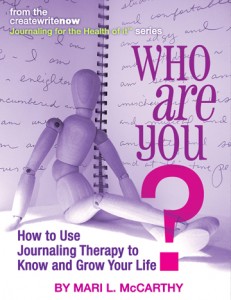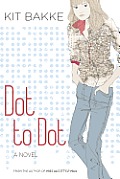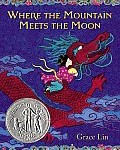Today I’m taking part in the WOW! Women on Writing tour for Mari L. McCarthy, the author of a new eBook called, Who Are You? How to Use Journaling to Know and Grow Your Life. A former business consultant, McCarthy now teaches others how to improve their lives through therapeutic journaling and uses journaling herself as a tool for business, for writing, and for life. Her new book focuses on revealing hidden fears (and how they hold you back), listening to your inner coach (that wiser voice inside), and finding out who you really are.
In this essay McCarthy created for Mother Daughter Book Club. com, she talks about the joy of sharing your journal with someone. Would you like a copy of her new eBook? Just leave a comment with your thoughts about journaling before midnight (PDT) Monday, September 26 and you’ll be entered to win one. Please note: the giveaway is closed. Congratulations to Amber on winning.
The Shared Journal – Mother-Daughter Adventures
By Mari L. McCarthy
You might think journaling is an entirely private matter, but that is not always the case. Some journals, like project or travel logs, are actually meant to be read by other people. Sometimes a journal is originally composed by several different people as a sort of team effort. So journal writing is not necessarily a solitary activity.
Consider the fun, therefore, of doing journaling in tandem with your daughter. You could share one notebook to express your thoughts on whatever topics you want. Some possibilities might be:
- Life in general
- Stuff I’m worried about
- My thoughts about what I am currently reading
- What I dreamed about last night
- How I’m doing in my progress toward goals
… and, of course, about a zillion other possible subjects of interest.
It would be fun, don’t you think, to pick up that well-worn notebook and read what your daughter wrote last night when she came in from her date? And, as the daughter, wouldn’t it be interesting to read accounts of your mother’s dreams?
Here’s one way of structuring the practice.
- Agree to try it. Look eye-to eye and be sure both parties are ready to give this journaling thing a go.
- Agree on a place where you will keep the notebook. Be sure it is safe from any prying eyes.
- Stick with the program for at least a couple of weeks no matter what. Write and read faithfully and as much as possible without judgment. If it seems awkward or difficult at first, keep working at it. Soon enough, you’ll be addicted!
- Agree whether or not to discuss the writings out loud. If one party or another would rather not talk out loud about anything in the journal, this wish should be respected. In any event, avoid over-discussing the journal entries. Let the process remain a written, not a spoken one.
- Assuming the process is as fascinating to you as I predict it will be, continue at your own pace. Find your own forms and rules. A mother-daughter journal shares the life of your mind and bonds the two of you closer than ever.
Now, be honest. If you have a relatively healthy relationship with your mother or daughter, is there any good reason not to share in this generously intimate way?
What are your ideas for mother-daughter journaling?
By Mari L. McCarthy – The Journaling Therapy Specialist, founder of Journaling for the Health of It™. Please visit Mari’s blog at http://www.createwritenow.com/journal-writing-blog/. In Who Are You? How to Use Journaling Therapy to Know and Grow Your Life (http://www.createwritenow.com/journal-therapy-store#ecwid:category=1077033&mode=product&product=4674145), Mari presents a gentle process for self discovery through journaling. Mari’s latest publication is titled, Your Money Matters! Use Journal Writing Therapy to Get Financially Fit Now. See http://www.createwritenow.com/journal-therapy-store#ecwid:category=1077033&mode=product&product=5436679 for details.











